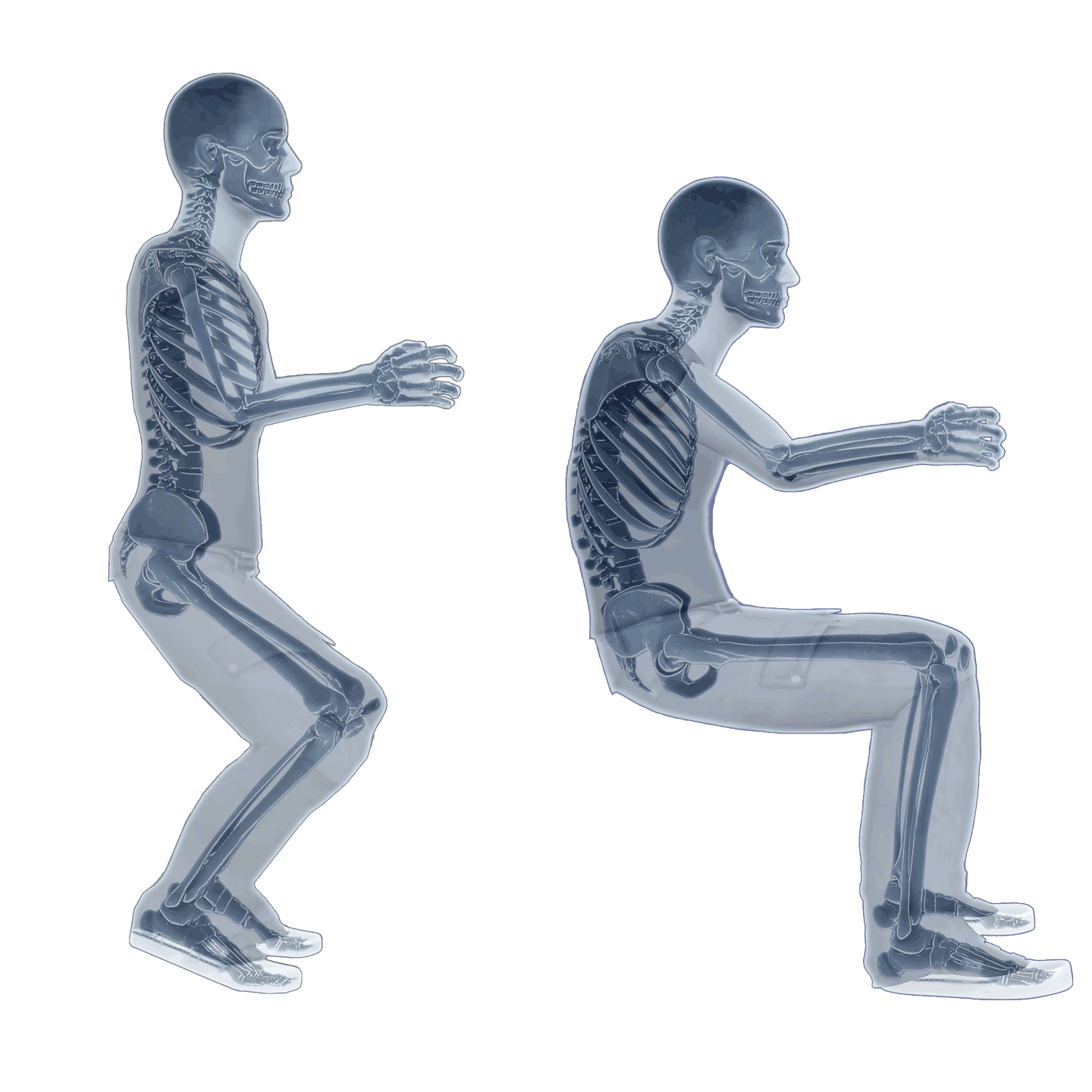Biomechanics and Injuries
The human body is equipped with a complex system reflexes, developed and evolved to protect the individual from injury.
Some of these reflexes are designed to trigger reactions in our muscles, to optimize the protection against impacts. They muscular response is obvious in our legs, but are also at hand in our arms, torsos and necks. The muscles react to the impact by contracting, so that they serve as shock absorbers and stabilize the spine.
Sitting in a traditional seat always puts your spine into a C-shape, where the weight of the head is centered forward of its supporting structures in the neck.This is the worst position for the spine to be in when exposed to a vertical impact. There is risk for head jolts, which can cause whiplash-like distortion injuries and disk herniations in the neck. Even the risk for lumbar disk herniations and vertebral fractures are greater when the spine is C-shaped than when it has it natural S-shape.
Standing keeps the spine in a better S-shaped posture. This is also why race boat drivers, when possible, often choose to stand up. Standing, however, has been shown to cause impacts on the back and neck, actually larger than those measured from the deck. The crewman standing with slightly bent legs keeps a tension in the thigh muscles. When the boat goes airborne, this tension will stretch the legs, so that the boat falls faster and the crewman follows split seconds after. Whether the crewman impacts with 2 or 10 tons of boat this impact can be significantly higher than the hull’s impact with the water surface. This is why many race boat drivers have permanent back injuries. See Video:
The Ullman Jockey Seats are developed with a special semi-active suspension system, designed to optimize the effect of the muscular reflex based protections systems. They are also designed to maintain the optimal S-shape of the spine and balance of the head. The system is developed so that a part of the impact is taken up by the arms and shoulders, where even the arms serve as shock absorbers, just like the legs. This distributes the impact between the leg and arms – hips and shoulders, significantly reducing the compression forces on the spine, discs and vertebrae.
The synergetic effects of the suspension system and the biologic response, neutralizes the resonance effects that make ordinary suspension seats capable of amplifying impacts.

Sitting hurts. Sitting in a traditional seat always puts your spine into a C-shape. Then the weight of the head is hanging forward of its supporting structures in the neck.
This is the worst position for the spine to be in when exposed to a vertical impact. There is risk for head jolts. Head jolts can cause whiplash-like distortion injuries and disk ruptures in the neck. Even the risk of vertebral fractures and lumbar disk hernias is much higher with the spine in this C-shape(Left picture above).
The Ullman Seats are developed with a special semi-active suspension system, designed to synergise with nature’s muscular, reflex based, protection-system. All Ullman seats are also designed to maintain the optimal S-shape of the spine and balance of the head at all times (Right picture above).







